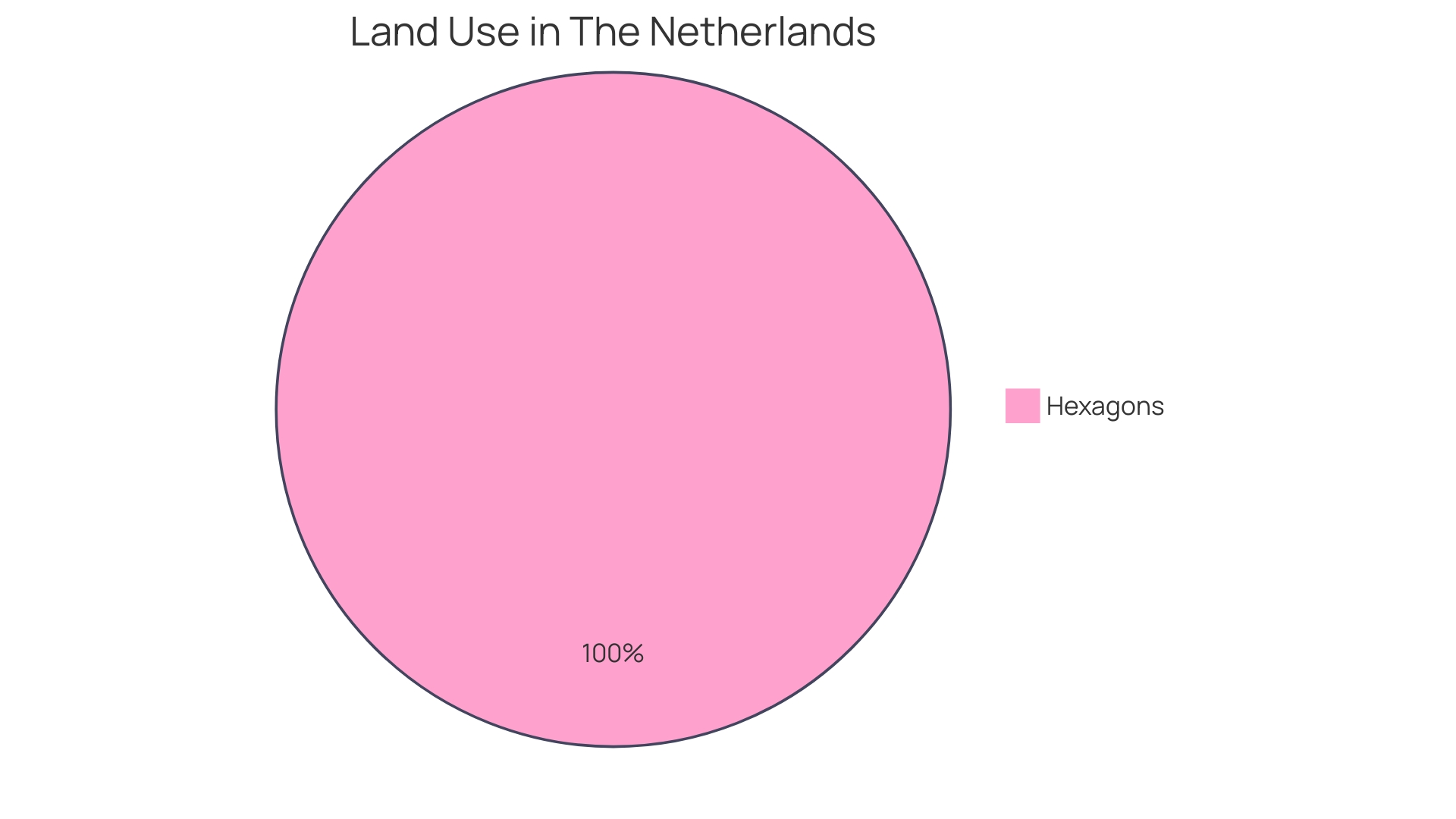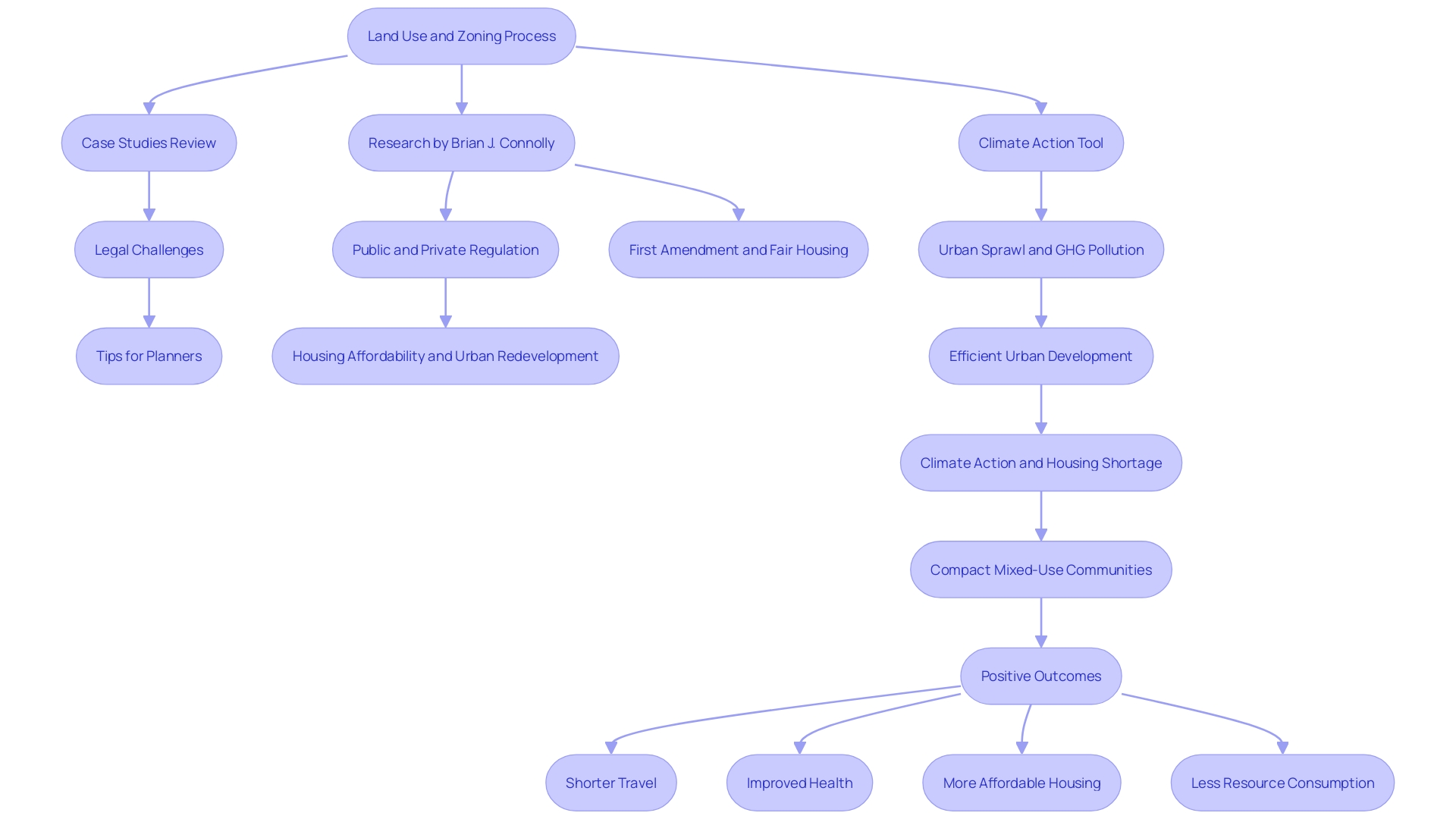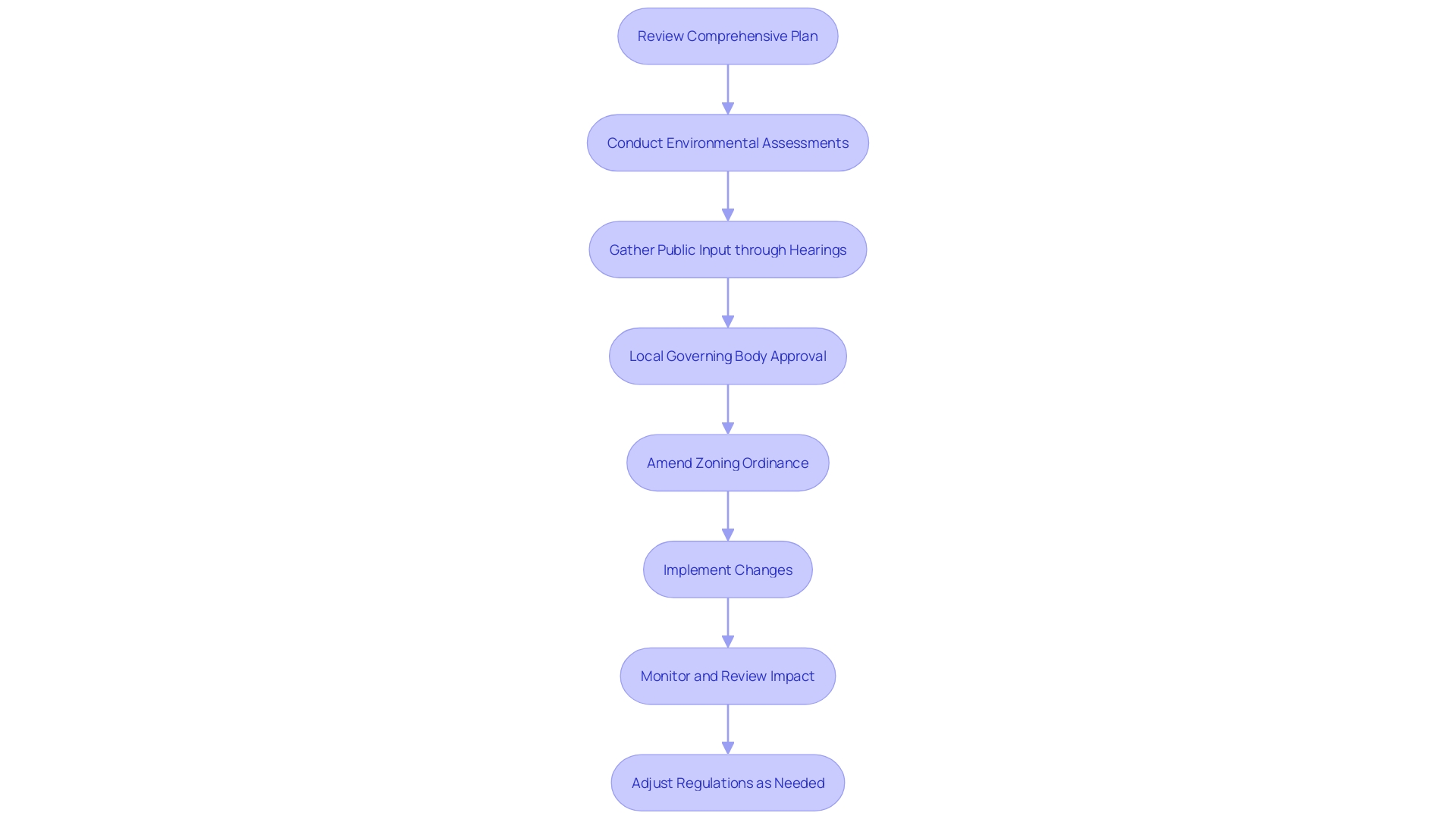Introduction
Land use is a critical aspect of urban development that encompasses a wide range of activities and developments conducted on land, from residential and commercial to agricultural and recreational purposes. It plays a pivotal role in determining what can and cannot be done on a specific parcel of land. Throughout history, land use has undergone significant transformations, particularly in relation to agriculture.
Today, nearly half of the habitable land on Earth is dedicated to agriculture, with modern practices increasing productivity significantly. However, this intensification has also raised concerns about environmental impact and the need for sustainable land use. Recent discourse has expanded to include the social dimensions of land use, recognizing the importance of community-driven processes in addressing environmental and equity challenges.
Additionally, the threat of land degradation is a global issue, necessitating restorative efforts and the reliable classification of territorial units for statistics. Balancing agricultural productivity with environmental stewardship and social equity is crucial for forging a sustainable path for land development.
What is Land Use?
Land use encompasses the array of activities and developments that are conducted on land, from residential and commercial to industrial, agricultural, and recreational purposes. This designation is pivotal in determining permissible activities on a given parcel. Historically, our planet's 150 million square kilometers were largely wilderness, but the agricultural revolution initiated a dramatic change. Today, nearly half of the world's habitable land is dedicated to agriculture—about 48 million square kilometers, an area quintuple the size of the United States.
Agriculture has not only transformed land use but also increased its productivity. Since the mid-20th century, wheat yields have soared from one ton per hectare to three and a half tons, a 3.5-fold enhancement due to modern agricultural practices. However, this intensification has led to significant environmental concerns, with agricultural land use contributing to wildlife and natural habitat destruction, often overshadowed by other environmental issues like climate change.
Recent discourse has expanded to include the nexus of environment, climate, and food equity, recognizing the importance of sustainable land use for community well-being. For instance, initiatives like the Food Equity Initiative in Charlottesville are reshaping comprehensive plans to address access to nutritious and affordable food. This reflects a growing awareness of the social dimensions of land use, where community-driven processes are essential for addressing broader environmental and equity challenges.
Furthermore, the threat of land degradation is global, with around 45% of the land surface and 3.2 billion people affected. Restorative efforts for degraded land promise high economic returns, with every dollar potentially yielding up to $30 in benefits. The European Union has also acknowledged the complexity of territorial patterns, enacting regulations to ensure a common classification of territorial units for statistics, enhancing the comparability and reliability of land use data.
This multifaceted perspective on land use underscores the necessity of balancing agricultural productivity with environmental stewardship and social equity to forge a sustainable path for land development.

Types of Land Use
Land use categories provide a fundamental framework for city planning and development, with each category serving specific functions within a community. Residential areas, for instance, are designed for dwellings ranging from single-family homes to high-density apartment complexes. Commercial zones cater to businesses and commerce, housing entities such as retail stores, offices, and dining establishments. Industrial zones are allocated for manufacturing and production activities, including factories and distribution centers. Agricultural land, covering vast expanses, is dedicated to farming, crop production, and livestock rearing, playing a crucial role in food supply. Recreational spaces such as parks and sports complexes offer leisure and community engagement opportunities. Lastly, institutional land encompasses essential public service facilities like schools, hospitals, and government buildings.
This structured approach to land use ensures that activities within each category are compatible with one another, minimizing conflicts and promoting a harmonious coexistence. The evolution of land use is evident through historical shifts, such as the significant expansion of agricultural land, which now occupies nearly half of the habitable land on Earth. These changes have profound implications, as highlighted by the environmental challenges posed by agricultural expansion. Modern agricultural practices have seen a threefold increase in wheat yields, demonstrating the potential for sustainable land use to meet human needs without compromising ecological integrity.
Recent legislative developments, such as the integration of territorial typologies into the NUTS Regulation, have further formalized the classification of land use, emphasizing the importance of reliable data for policy-making. This recognition underscores the complexity of analyzing territories, necessitating a range of statistics that reflect the diverse geospatial characteristics of different regions. As urbanization continues, the judicious management of land resources becomes increasingly critical, with planning initiatives like the Food Equity Initiative aiming to address equity in access to nutritious food through community-driven processes.
In the context of climate change, the role of land use policy is gaining prominence as a key element in the solution. It is a time of critical decision-making, as evidenced by initiatives such as Washington State's climate planning requirements, signaling a shift towards prioritizing land use in climate strategies. The call to action is clear: to employ land use policy changes effectively and expeditiously, ensuring that our limited land resources are managed wisely for current and future generations.

What are Zoning Laws?
Local governments implement zoning laws to shape the urban landscape, specifying how land can be utilized within their jurisdictions. These regulations classify areas into distinct zones, each with its own set of rules concerning acceptable uses, permitted densities, construction specifications, and aesthetic guidelines. Their purpose is multifaceted: to foster an organized pattern of development, safeguard property values, and maintain harmony among varying land uses.
For instance, California's approach to single-family-only zoning illustrates the complexity of zoning regulations across its considerable population and numerous municipalities. This complexity is mirrored in New Zealand, where a significant increase in housing development occurred after zoning laws were relaxed, leading to the construction of over 20,000 new homes in Auckland alone.
Moreover, zoning laws are historically tied to fundamental property ownership rights, echoing the founding American belief in the natural rights to life, liberty, and property. Before zoning, property use was governed by nuisance laws and covenants between landowners to prevent undesirable uses. However, as cities grew, so did the need for a more systematic approach, leading to the advent of zoning as part of city planning to ensure orderly development.
Contemporary examples highlight the dynamic nature of zoning laws. Charlottesville's recent advancement in increasing residential density, through reforming zoning ordinances, is a testament to cities adapting to new housing and urban development challenges. Such developments underscore the ongoing dialogue between the need for regulation and the inherent rights of property owners. Houston presents an interesting case: although it lacks a conventional zoning code, the city employs other land use regulations that influence development in a similar fashion.
Zoning remains a crucial tool for municipalities to direct growth and development, reflecting a balance between collective urban planning and individual property rights.
Types of Zoning
Land use and zoning regulations serve as the framework for urban development, shaping the fabric of our cities and towns. Zoning classifications are essential for this structure, each with its distinct purpose:
-
Residential Zoning caters to living spaces, often subdivided into single-family homes, apartments, and mixed-use developments where dwellers can reside above shops and restaurants.
-
Commercial Zoning forms the backbone of economic activity, providing for retail stores, offices, and businesses that drive the local economy.
-
Industrial Zoning is reserved for areas of production, manufacturing, and logistics, critical for supporting a community's employment and infrastructure.
-
Agricultural Zoning protects and promotes farming endeavors, ensuring that agricultural practices have a dedicated space within the community.
-
Open Space Zoning preserves the natural beauty and recreational areas for residents, offering a respite from urban life while protecting local ecosystems.
-
Special Purpose Zoning addresses the unique needs of community institutions like schools, hospitals, and airports, ensuring they are strategically placed for optimal access and functionality.
These zoning categories are not merely abstract concepts but are deeply entwined with the daily lives of individuals. The places we call home, the jobs we perform, and the leisure activities we enjoy are all influenced by the zoning decisions made by local governments. As communities evolve, zoning laws adapt to accommodate new societal needs and priorities, such as the recent initiative in Charlottesville, where the city council approved an overhaul of zoning regulations to facilitate the creation of affordable housing units.
Despite its ubiquity, zoning has not always been a part of American urban planning. Its origins can be traced back to early 20th-century Los Angeles, with the intent to separate incompatible land uses. Over time, zoning has become a sophisticated system, with tools like MapLink offering interactive online maps to help individuals understand what activities are permissible on their property.
However, zoning can impose restrictions that limit development and have unintended consequences on property rights and affordability. It's a balancing act between individual property rights and the collective good, reflecting the ever-changing dynamics between personal liberty and government planning. The ongoing dialogue about zoning's role in our lives underscores its fundamental impact on where we live, work, and play.
Key Differences Between Land Use and Zoning
Land use and zoning are intertwined yet distinct facets of urban development. Land use encompasses the broader application of land, incorporating both current utilization and the potential for future developments, reflecting the dynamic nature of how communities grow and evolve. Zoning, on the other hand, is the regulatory scaffold that guides this development, providing a structured approach through zoning ordinances that designate specific land uses to particular areas.
It is important to understand that while land use is subject to evolution and can adapt to societal needs, zoning is inherently more static. Amendments to zoning regulations often necessitate a formal legislative process, which can be both time-consuming and complex. This distinction underscores the need for a profound understanding of both concepts to effectively navigate and influence land development.
Enforcement of these two elements also varies. Land use is governed by regulations and permits that directly influence how landowners and developers may use their property. Zoning, conversely, is enforced by local government through zoning ordinances, which are instrumental in shaping the urban landscape and maintaining order in land development.
The control of land use typically resides with the property owners and developers who decide how to utilize their land within the regulatory framework. Zoning, however, is managed by local governments and planning authorities, who establish the regulatory environment that dictates permissible land use.
For example, California's single-family-only zoning illustrates the intersection of land use and zoning, where statewide efforts to address climate action and housing shortages are influenced by existing zoning laws. Urban sprawl, often exacerbated by zoning, contributes significantly to greenhouse gas emissions and limits housing availability. This not only affects the environment but also directly impacts the cost and availability of housing.
Furthermore, a study of over 2,600 municipalities in the United States revealed the intricate details of zoning codes and the potential barriers they create, such as minimum lot size regulations, which can significantly impact housing affordability and availability.
In practice, local governments leverage zoning as a strategic tool to manage city assets and achieve strategic objectives, as evidenced by various council actions to manage land disposition frameworks and asset portfolios. These decisions can have profound implications for community development, housing affordability, and environmental sustainability.
Understanding the nuanced relationship between land use and zoning is essential for those involved in land development, as it affects everything from property rights to urban planning and environmental conservation.

How Land Use Designations Impact Zoning
Understanding the deep implications of land use designations is crucial for property development and urban planning. These designations set the stage for zoning regulations, dictating allowable uses, density, and other development standards. For instance, a parcel zoned for residential use aligns with the construction of homes, while commercial land use permits businesses.
Recent case studies, such as California's extensive zoning for single-family homes, highlight the importance of these designations for housing availability and environmental impact. Zoning reforms in the state aim to address the shortage of homes, promoting denser, mixed-use communities that can lead to reduced greenhouse gas emissions and more affordable housing.
Legal challenges often arise with zoning reforms. For example, Brian J. Connolly, an Assistant Professor of Business Law, discusses the necessity of legal strategies to defend zoning changes that facilitate urban redevelopment and housing affordability.
News from cities like St. Paul demonstrates practical applications of these concepts. The city's move to increase neighborhood-scale density by allowing up to four housing units per lot reflects a growing trend towards more inclusive zoning practices, potentially reducing the racial and economic segregation historically reinforced by land-use laws.
Supporting these insights, statistics from the National Zoning and Land Use Database shed light on the complexity and variety of zoning codes across over 2,600 U.S. municipalities, emphasizing the need for accessible and evolving resources for urban planning.
Quoting foundational principles, America was built on the notion that property rights include the right to use land. However, historical zoning practices have also contributed to racial inequality, underscoring the need for equitable land use planning.
Ultimately, effective land use designation and zoning regulation are about more than just dictating development standards; they are about creating sustainable, inclusive communities and confronting our housing crisis with innovative legal and policy solutions.
Changing Land Use Designations vs. Zoning Codes
Modifying land use designations and zoning codes is central to shaping community development, yet each requires distinct processes and considerations. Land use designations form part of a broader land use plan that envisions the community's future development and spatial layouts. Alterations to these designations necessitate a thorough review and potential amendment of the comprehensive plan, often involving environmental assessments, public input through hearings, and local governing body approval.
Zoning code amendments, in contrast, focus on adjusting specific regulations within the existing zoning ordinance. This too may call for public engagement and the local planning commission or governing authority's endorsement. Both land use and zoning changes are grounded in in-depth analysis, legal compliance, and community participation.
The recent adoption of a form-based zoning code in Kingston, New York, exemplifies this. After decades of adhering to an outdated comprehensive plan, the city transitioned to a zoning approach that prioritizes physical form over segregating uses, reflecting a modern understanding of urban development needs. Similarly, Minneapolis' landmark zoning reform was propelled by inclusive engagement, addressing housing affordability and environmental concerns.
Belmont's embrace of form-based coding, spurred by growth and the desire for walkable neighborhoods, shows proactive planning's significance. Moreover, cities like Charlottesville are revising zoning ordinances to implement comprehensive plans that, among other things, increase residential density and offer development incentives for affordable housing.
Understanding zoning's essence—as a tool for urban planning that delineates land use, sets development parameters, and can influence housing affordability and community character—is vital. It's a complex, evolving landscape where community principles, public policy implications, and quantitative data intersect, as highlighted by the National Zoning and Land Use Database.

Regulation of Development and Future Planning
Zoning is a foundational element of urban planning, acting as a regulatory mechanism to guide the orderly development of communities and ensure compatibility with existing land uses. Through zoning, local governments establish parameters for building height, setbacks, lot size, parking availability, and aesthetic design, which are essential for maintaining community standards. The strategic application of zoning regulations helps shape the patterns of land use, transportation systems, and infrastructure expansion, thereby enhancing the quality of life and sustainability of neighborhoods.
For instance, the Canton of Zurich, Switzerland, illustrates an incremental and democratic approach to zoning adjustments aimed at urban densification. There, citizens voted on proposals to upzone, allowing increased housing density by amending zoning laws. This process unfolded in a staggered manner, with moderate intensifications such as permitting an additional floor on a three-story building, particularly around Zurich's protected historic center.
Similar reform efforts were seen in Minneapolis, where advocates emphasized the inclusion of voices typically marginalized in land use discussions. This inclusive approach was instrumental in passing zoning reforms that addressed housing affordability, racial justice, and environmental concerns. Preliminary outcomes in Minneapolis indicated that these zoning changes could influence building trends and housing prices, offering insights for other regions, including New York State and New York City.
Zoning's historical context further underscores its importance, as it replaced earlier methods of land use control, such as nuisance law and covenants. These previous methods often resulted in a haphazard pattern of urban development. Zoning emerged as a coherent strategy to create more orderly, beautiful, and functional cities, contributing to improved public health, transportation, and overall living conditions.
In essence, zoning is a government-devised system that subtly orchestrates daily life by designating where people can live, work, and engage in leisure activities. This system of prescribed uses for properties is embedded in the very fabric of American communities, reflecting a longstanding philosophical belief that property rights include the freedom to use one's property. However, this belief has evolved to accommodate the nuanced balance between individual property rights and the collective interests of the community.
Challenges and Limitations of Zoning Regulations
Zoning regulations, which delineate permissible uses across different areas within a community, play a vital role in urban planning. They provide an organized framework to separate residential, commercial, and industrial zones, thus avoiding incompatible land uses. However, several challenges arise from these regulations.
-
Inflexibility: Zoning laws can be rigid, struggling to adapt to evolving land use trends or shifts in community needs. This rigidity can hinder the development of mixed-use zones that blend residential spaces with shops and amenities, an urban planning approach that promotes walkable, livable neighborhoods.
-
Discrepancies: At times, zoning regulations may not reflect the vision set forth in comprehensive land use plans, leading to inconsistencies and potential conflicts. This misalignment can impede the creation of cohesive, well-integrated urban environments.
-
Lack of Coordination: The development and enforcement of zoning regulations can be fragmented across different government departments, resulting in inconsistent decision-making and a lack of unified direction in land use planning.
-
Variance and Exceptions: Securing variances or exceptions to zoning regulations can be a complex, drawn-out endeavor. This complexity creates obstacles for development projects that don't fit neatly within existing zoning categories, potentially stifling innovation and growth.
-
Public Input: Zoning decisions can be contentious. Ensuring that public participation is meaningful and that all stakeholders have a voice in the process is a significant challenge.
Despite these challenges, zoning remains an indispensable tool for managing land use and fostering orderly development. Case studies, such as zoning reforms in Minneapolis, highlight the importance of including diverse voices in the conversation, particularly those impacted by restrictive zoning practices. The engagement of these voices was crucial in pioneering zoning reform that addressed issues of housing affordability, racial justice, and environmental sustainability.
In the context of New York City, Mayor Eric Adams' proposed reforms aim to address the housing crisis by easing restrictions and enabling the construction of up to 100,000 additional homes. Similarly, Austin's initiatives to relax housing restrictions reflect efforts to meet the surging demand for affordable housing.
As these examples illustrate, zoning reform is an evolving field that requires both the acknowledgement of property rights and the pursuit of innovative solutions to meet the changing needs of urban populations. It is a delicate balance between safeguarding the inalienable rights to "life, liberty, and property" and guiding the growth of communities in a way that serves the greater good.

Conclusion
Land use and zoning are critical for sustainable urban development. Balancing agricultural productivity, environmental stewardship, and social equity is key. Zoning laws provide structure, classifying areas into specific zones with rules on land use.
They safeguard property values and promote harmonious development.
Land use designations set the stage for zoning regulations, influencing permissible uses and development standards. Recent case studies show the importance of these designations for housing availability and environmental impact. Zoning reforms aim to address housing shortages, promote denser communities, and reduce emissions.
Understanding the differences between land use and zoning is crucial. Land use encompasses current and potential developments, while zoning provides a regulatory framework. Navigating land development requires a deep understanding of both concepts.
Despite challenges like inflexibility and lack of coordination, zoning regulations remain vital for managing land use. By including diverse voices and addressing housing affordability, racial justice, and sustainability, zoning reform can create inclusive communities.
In conclusion, land use and zoning play vital roles in urban development. Balancing productivity, stewardship, and equity is crucial. Zoning laws provide structure and promote harmonious development.
Land use designations influence regulations and impact housing and the environment. Understanding land use and zoning is essential. Despite challenges, zoning is indispensable for managing land use.
By embracing reform and addressing key issues, we can create resilient communities for future generations.
Learn more about the impact of land use designations on housing availability and the environment.




